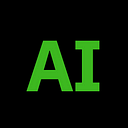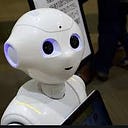Member-only story
Mastering Graph-Based RAG Models: How to Combine Knowledge Graphs and LLMs for Better Results

Introduction
Imagine you’re trying to create a sophisticated virtual assistant that can help you with both simple tasks and complex queries. The assistant doesn’t just respond based on pre-programmed answers; instead, it understands context, connects disparate pieces of knowledge, and provides tailored, accurate information.
How do we make this assistant smart enough to handle a range of questions from multiple domains? The answer lies in combining Knowledge Graphs and Large Language Models (LLMs) into a powerful architecture called Graph-Based Retrieval-Augmented Generation (RAG) Models.
Graph-based RAG models provide a robust framework to improve how AI systems understand and generate information. Knowledge graphs offer structured representations of real-world knowledge through entities and their relationships, while LLMs help to generate coherent, contextually appropriate responses.
The fusion of these two technologies has led to more intelligent, efficient, and dynamic AI systems that are capable of handling complex tasks like semantic search, recommendation systems, and real-time data interpretation.
In this article, we will delve into the core concepts of graph-based RAG models, explore how to combine knowledge graphs with LLMs, and offer practical insights into how developers can implement these models for better AI performance.
Understanding Graph-Based RAG Models
Before we dive deeper into combining knowledge graphs and LLMs, let’s break down what Graph-Based RAG models are and how they work. RAG (Retrieval-Augmented Generation) refers to models that combine the traditional retrieval of relevant information with generation capabilities to produce high-quality responses. The “Graph-based” aspect refers to using knowledge graphs, a type of structured data, to improve the retrieval process.
A knowledge graph is a network of real-world entities (such as people, places, objects) and the relationships between them. For example, in a medical knowledge graph, entities might include “diabetes,” “insulin,” and “blood sugar,” with relationships such as…

